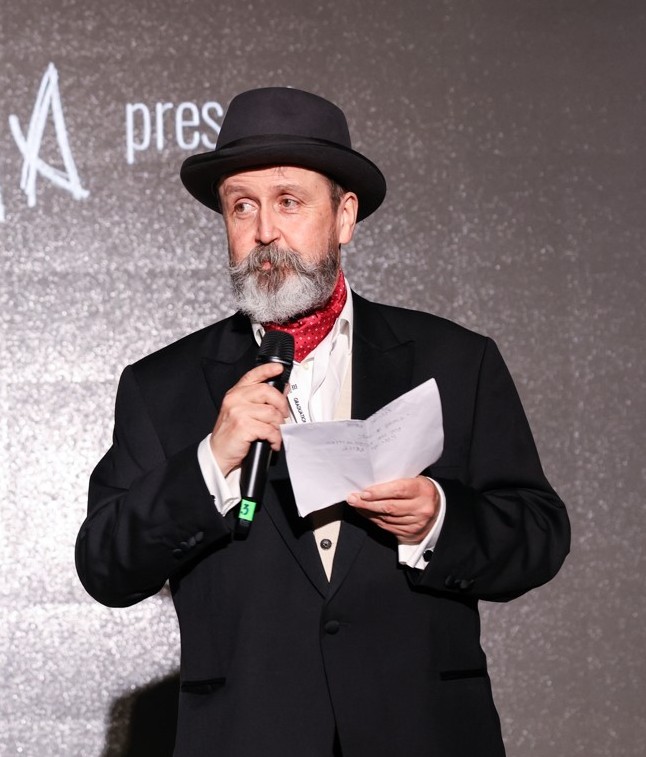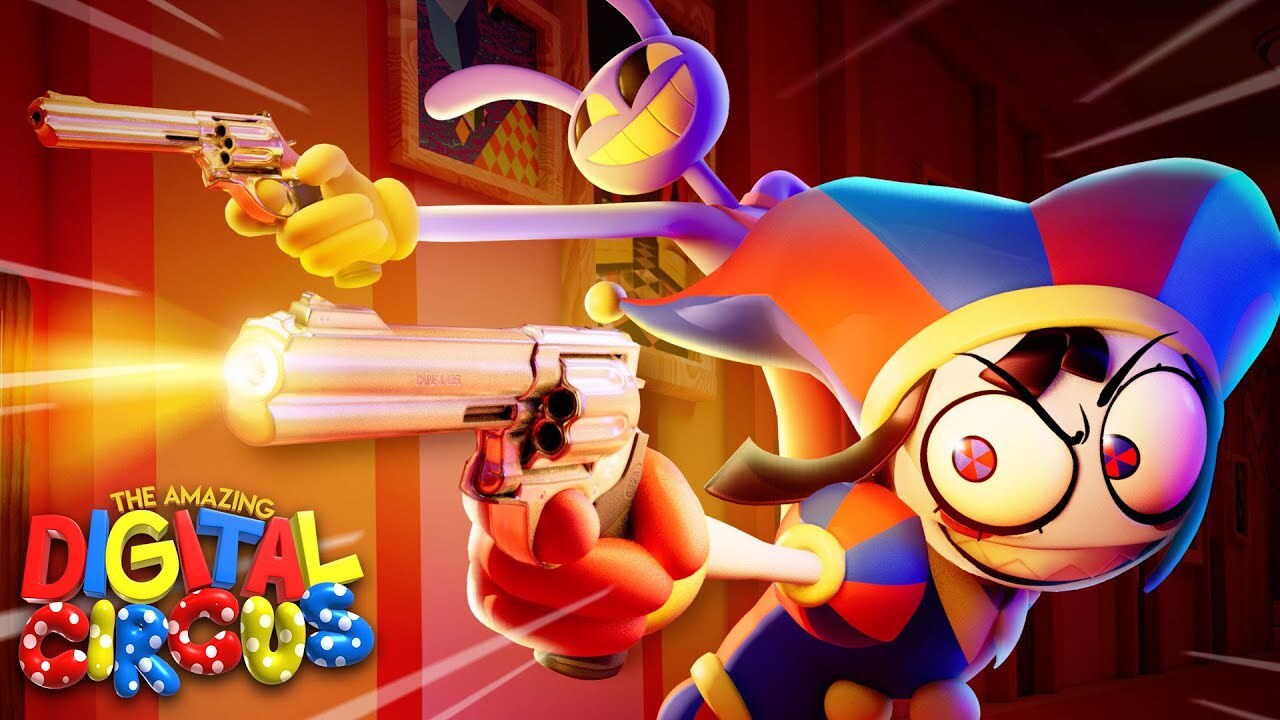From architect to consultant and trainer for Netflix, Animal Logic and Epic Games, Mark Flanagan’s career has been anything but conventional.
Yet if you look closely, it’s easy to see the guidelines that govern the choices of this Australian jack-of-all-trades, a 3D artist who has become a specialist in nurturing the animation talent of tomorrow.
Now Education Manager for the Australian VFX, animation and video games school CDW Studios in Melbourne, Mark Flanagan agreed (in between two masterclasses that he is leading) to answer our questions about his career path, as well as the state of the sector and the prospects open to today’s young generation of 3D animators and artists.
A pragmatic yet resolutely optimistic discussion, with plenty of sound advice for you to consume without moderation.

Combining theory and practice, art and technique: the reason for European excellence
From the outset, Mark emphasises how lucky European students are to be able to develop in the French training ecosystem, as well as in Denmark, Germany and the Czech Republic. “I’ve been talking for years about the skills gap that is undermining the industry in Australia. I originally thought it was due to a lack of technical knowledge, but it’s clear to me now that it’s actually the first pieces of the jigsaw that are missing, namely the ability to observe the world around us, and the ability to hone our artistic sense and creativity. At CDW, that’s what we’re now focusing on, and the difference is strongly felt in the recruitment rate.”
A newcomer to Australia, Mark points out that this vision of combining the stimulation of creativity with the development of technical mastery has long been integrated into French training courses in 3D animation and vfx, as is the case at ESMA.
It’s a state of mind that goes hand in hand with putting into practice the skills and theoretical knowledge he has acquired, which he believes is essential to prepare for the realities of the industry. Indeed, for Flanagan, animation is a collaborative process par excellence. It is therefore crucial to be able to put your ego aside, work effectively as part of a team and be part of a dynamic exchange. This is something that the trainer puts into practice himself through his many collaborations with international schools.
A sector in (r)evolution
For the expert, despite the challenges currently facing the animation industry (and entertainment in general), the sector remains solid. “My feeling is that for a long time we were convinced that growth would be continuous. Today, we can see that a certain plateau has been reached, and that it is no longer as strong, with studios remaining at a ‘stagnant’ level of production.
But this level is pretty high! In my opinion, the trend today is towards more content for Youtube, TikTok and other streaming options. Of course, the question of the economic model is still in its infancy, but when you analyse the success of The Amazing Digital Circus, produced by the Australian studio Glitch Studios, you realise that a ‘hit’ on Youtube can lead to a conversion to Netflix, even if the content is highly targeted.
These niches are where animation is heading these days, but that’s not restrictive; for me it’s more a range of opportunities open to the younger generations of animators”.

A variety of technologies, but always at the service of creativity
A connoisseur of the latest technological advances in animation and special effects, Flanagan nonetheless stresses that these are still tools that need to be put to creative use.
“Motion capture, for example, made it possible to overcome some impressive technical challenges in The Lord of the Rings and Happy Feet. But in the end, it was the 3D artists and animators who brought their creativity to these characters.


Of course, Andy Serkis’ performance as Gollum was impressive, but having met some of the people who worked on the project, only a tiny part of it was transposed into the final result!
It was the animators who brought Gollum to life.
In my opinion, motion capture is the logical evolution of what animators were already doing, i.e. filming themselves in motion before transposing this into animation. But it’s still a tool.
Mark Flanagan also takes a similar view of real-time tools such as Unreal Engine, which are used for artistic creativity to help with the various phases of a project. Software and methods that in a way democratise animation, allowing new creators to emerge and put their ideas into images.
“Because it’s the ideas that are the most important”, says the expert. “That’s why I believe that generative AI, no matter how good it is, cannot replace the emotions that a human being can infuse into a character, a story or a universe. As human beings, what interests us is probing the soul, understanding the other person, whether real or imaginary. And this soul cannot be created by AI, a technological advance that we are perhaps a little too quick to adopt.”
A technology which, according to Flanagan, should remain subordinate to creativity, but which can unlock new forms of creation. And this applies regardless of the sector in which animation is used.
Multiple opportunities
An architect in his early days, Flanagan also insists on the multiplicity of sectors in which animation and vfx are used today. “To be honest, I learnt more about architecture from training in 3D animation than from any of my previous experience. The ability to shape space, create textures and lighting is a real asset in this profession, but in many other areas too.”
And the trainer goes on to cite the importance of 3D images in today’s fashion world, the digital twins used in industry, and the world of gaming, a very important gateway for people wishing to work in the video game industry. “I’m not an advocate of this type of product, far from it, but if it gives you the chance to cut your teeth as a programmer, game designer or 3D artist, go for it. It’ll put a line on your CV, and it’ll also give you a foothold in the industry.”
According to Flanagan, the opportunities are many and varied for those who can be pragmatic and daring. “This is something that needs to be encouraged by schools and understood by students. You don’t have to work for Dreamworks, Disney or Pixar to be ‘successful’. You could work for BMW, Jean-Paul Gaultier, or many other equally prestigious brands, which rely on animation today to differentiate themselves.”
“Behind a good project is a good team”.
For Mark Flanagan, what makes a good professional today, even more than their artistic and technical qualities, is the fact that they are pleasant to work with. “To put it bluntly, nobody wants to work with an asshole, even a talented asshole. And arriving at a new job to try and change everything and impose your point of view is the best way to ruin your career. Being part of a studio means being autonomous, flexible, but also capable of receiving feedback on your work without taking it personally. It’s not a personal affront to receive feedback on what you’ve produced, on the contrary. When you collaborate on a production, these remarks are made to improve the project as a whole, it’s not about you. That’s why I always stress to students: you will be interviewed on the basis of your skills, you will be hired on the basis of your humanity, and your ability to integrate into the studio’s corporate culture, and to work as part of a team.”
To hammer home the point, the trainer also advises aspiring presenters to prepare their applications as thoroughly as possible, not only to get to know the company they are targeting, but also to avoid ending up in a place that is not right for them.
For him, it’s the team that counts even before the project. “A good team can have a huge impact and turn a mediocre project into a brilliant result. A bad team will destroy even the best of ideas.”
What advice do you have for students entering the job market today?
For Mark Flanagan, it is essential not to be too fussy about your first job.
“It’s the most difficult job you’ll have to get,” says the trainer.
“So if you get an opportunity, grab it. It may not be the job of your dreams, but it will give you your first experience and allow you to build on the small victories. It’s by building on these that you’ll achieve your ambitions. Don’t give up too soon.
I’m sad to see so many students give up after a year because they weren’t ‘found’ by the majors, because they didn’t manage to reach the highest level of the industry straight away. Don’t be fooled by the success stories, it takes an enormous amount of work to achieve these kinds of projects and jobs. You have to be patient, while remaining open to opportunities, capable of taking risks, and listening to the sector.”
These are all qualities that will enable young professionals to develop their network, acquire new skills and build a solid portfolio.
Find out more about his profile: Mark Flanagan